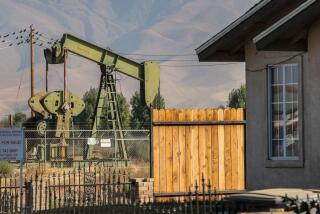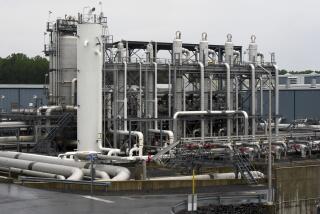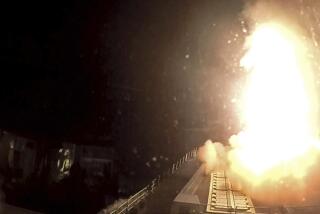ConocoPhillips joins hiatus in offshore Arctic operations
SEATTLE — A third major oil company has announced it is backing off from offshore drilling in the U.S. Arctic, with ConocoPhillips saying it will put its planned 2014 operations in the Chukchi Sea on hold because of “regulatory uncertainty.”
In a statement Wednesday, the company said that “evolving” federal regulations and permitting standards, put into play in the wake of Shell’s troubled Arctic drilling debut last year, made it unwise to commit the large amount of money required for drilling its first offshore Arctic wells next year.
“While we are confident in our own expertise and ability to safely conduct offshore Arctic operations, we believe that more time is needed to ensure that all regulatory stakeholders are aligned,” Trond-Erik Johansen, president of ConocoPhillips Alaska, said in a statement.
Shell recently announced that it is pausing its offshore Arctic operations for this year after spending nearly $5 billion to commence its operations in 2012 but, thanks to a series of mishaps, failing to dig a single well into hydrocarbon zones.
Statoil announced last fall that it was postponing its Arctic debut until at least 2015, and company spokesman Ola Morten Aanestad said even that is not a firm commitment. “The earliest possibility would be 2015, but we have not decided that it will be drilled in 2015,” he told the Los Angeles Times on Wednesday.
This means a substantial delay in accessing what is believed to be one of the largest reserves of oil and natural gas in the world.
Alaska officials expressed regret. “The federal government’s inability to provide regulatory certainty is once again reducing jobs and economic opportunities for Alaskans,” Gov. Sean Parnell said in a statement.
But Interior Department officials said offshore oil and gas development remains a priority for the Obama administration.
“The expectations have been crystal clear from the very beginning that any approved activities will be held to the highest safety and environmental standards,” department spokeswoman Jessica Kershaw said in an email.
ConocoPhillips had planned to drill one well, and possibly two, in its Devil’s Paw prospect about 120 miles west of the village of Wainwright, significantly farther offshore than Shell’s operations in 2012.
But ConocoPhillips spokeswoman Natalie Lowman said in an interview that the company still has not received approval from federal regulators for its exploration plan and oil spill response plan. “We don’t have the regulatory approvals necessary to proceed, and we don’t have predictable permitting standards,” she said.
“Since we purchased the leases in 2008, the regulatory requirements have been evolving constantly. We’re also at a point right now where we need to make significant financial commitments to provide an opportunity to drill in 2014, and it’s not commercially prudent to make those significant up-front financial commitments in the face of all this regulatory uncertainty.”
U.S. Interior Secretary Ken Salazar recently announced that Shell would be required to submit a much more detailed operations and management plan before resuming offshore operations in the Arctic in light of the company’s multiple mishaps, which included a grounded drilling rig, air emissions, environmental and safety violations and failure to get its oil spill containment system tested and deployed.
The Interior Department also last week completed a review of Arctic operations, which called for the federal government to use a more coordinated, multiagency approach in reviewing and regulating offshore oil drilling, in addition to expanded shipping and the demands of a warming climate.
Johansen said ConocoPhillips officials “welcome the opportunity” to work on that review. “Once those requirements are understood, we will reevaluate our Chukchi Sea drilling plans. We believe this is a reasonable and responsible approach given the huge investments required to operate offshore in the Arctic.”
One issue undoubtedly delaying federal approval of ConocoPhillips’ drilling plans was the company’s intention to use for the first time in the Arctic a jack-up drilling rig, which, unlike the floating rigs Shell employed, would attach to the ocean floor.
Questions have been raised about whether the company would be able to operate safely in the event of swiftly arriving ice packs, as happened during the opening days of Shell’s season in 2012, when its rig was forced to sail away from an advancing ice floe.
Sources familiar with talks between the federal government and ConocoPhillips said there were also questions about how the company would comply with requirements that it be able to drill a relief well in the event of a blowout that couldn’t otherwise be contained.
Conservation groups said the hiatus would allow for the development of better-thought-out regulations.
“There’s no reason the government should be operating with these clearly failed standards and oversight, and Conoco’s decision really provides more room to move forward and make operations safe. We really need to make sure that accidents, mishaps and disasters stop,” Christopher Krenz, Arctic program manager for Oceana, said in an interview.
“This isn’t a question of the federal government creating regulatory uncertainty. It’s a question of the federal government holding industry to high performance standards, which I think everyone wants,” said Eleanor Huffines, U.S. Arctic program manager for the Pew Charitable Trusts.
ALSO:
Washington sues florist who said no to a same-sex wedding
Scripps Vocabulary Quiz: Don’t be pertinacious, take the test!
The bee hero: Fighting the largest die-off of bees in U.S. history
More to Read
Sign up for Essential California
The most important California stories and recommendations in your inbox every morning.
You may occasionally receive promotional content from the Los Angeles Times.









